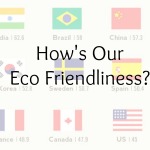There are few articles of clothing as cozy, simple or essential to today’s wardrobe than cotton T-shirts. But cotton has a dark side. And according to a new study, there may be few products less sustainable than a cotton T-shirt.
Related: The Dirty Side of Cotton
The Danish study, funded by Denmark’s Ministry of the Environment and the IC Group, which owns brands including Peak Performance and Tiger of Sweden, is the first of its kind to assess the price cotton tees cost the planet. The verdict: $3.40 for each shirt. That’s taking into account the use of water, pesticides and herbicides, fertilizers and energy costs necessary to produce a single shirt. Denmark found that its T-shirt production is costing the planet more than $510 million annually.
And the toll is far too steep, said Kirsten Brosbøl of Denmark’s Ministry of the Environment.
“Everything, from the enormous amounts of fertilizer and water consumption on cotton fields to carbon-dioxide emissions from leather and zip manufacture, impacts the environment,” Brosbøl said in a statement. “Now we can see what this actually costs, and even though all our clothes are produced abroad, we still have a responsibility. I call on the industry to make things better and to use these accounts to reduce their environmental footprint.”
Rock and Roll legend Neil Young recently took a stand against non-organic cotton, even giving away dozens of organic cotton T-shirts in order to bring awareness to the issues surrounding conventional cotton, which is the most pesticide intensive crop grown in the world. “In the U.S., it takes about 1/3 of a pound of pesticides and herbicides to grow enough conventional cotton for just one T-shirt,” he said.
But, of course, who wants to give up T-shirts?
They’ve become a staple in contemporary fashion pairing with everything from workout clothes to couture skirts, pants and denim. We don’t need to abandon the T-shirt as a wardrobe essential though. There are many manufacturers using organic cotton and sustainable production methods. And, of course, perhaps the very best option these days is scouring thrift and second-hand shops for vintage tees that only seem to get more fashionable as they age.
T-shirt image via Shutterstock


